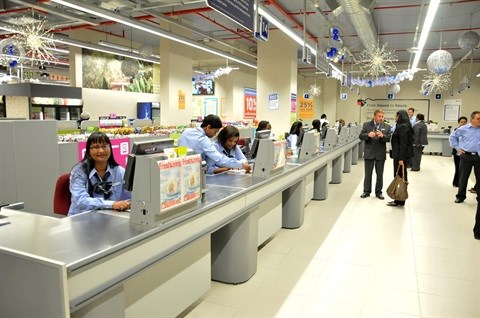
Top stories




David North, Group Strategy and Corporate Affairs Director at Pick n Pay, explains that reducing carbon emissions in stores and distribution centres has been a key sustainability goal for a number of years: "In 2010, the group set a target to reduce carbon emissions by 15% by 2015. We have met and exceeded this goal ahead of our target date. Measured against our 2010 baseline of stores, our emissions have already been cut by 19.4%. We reduced carbon emissions per square metre by 4% in 2013 alone."
The group has reduced energy use per square metre by 30% against its 2008 baseline and, because of this and other work; it is currently the leading retailer across Africa in the global Carbon Disclosure Project. "With our work on reducing energy and carbon emissions, we have saved around R508m since 2008," added North.
Because 85% of Pick n Pay's carbon emissions from buildings arise from electricity consumption, achieving greater energy efficiency has been crucial. Successful initiatives have included helping staff to save energy in stores, lighting that is more efficient and improvements in refrigeration plant control. "Energy efficiency is at the core of our new store designs. Our new stores that opened in 2013 are up to 44% more energy efficient than stores opened in 2010. In the past financial year, 28 existing stores have been retrofitted with energy-efficient lighting and 33 with energy-efficient refrigeration. We are not just focusing on our stores. Our two flagship distribution centres are fitted with daylight harvesting, as well as motion sensors and are 20-25% more energy efficient as a result."
Approximately R55m was invested in lighting and refrigeration retrofits in 2013, already generating savings of R14.5m over the first year. "This year will see further investments in voltage optimisation and dashboards for our refrigeration monitoring."
"Providing staff with the means to measure, manage and reduce energy use is crucial. All corporate stores now have online metering and sub-metering of electricity and store managers have access to dashboard reporting of the energy use within their store, allowing them to manage energy more efficiently. This includes being alerted to incorrect air-conditioning timer settings and inefficient refrigeration units that increase energy consumption unnecessarily. This was expanded to 30 Boxer stores and to all Pick n Pay distribution centres in 2013. In addition, the use of key-switches to turn off store lights at night can introduce savings of up to 14,400kWh per store per year, while key-switches for bakery ovens can reduce consumption with a further 36,000kWh per year."
The group is also focusing on reducing fugitive emissions from refrigerant and air-conditioning gases. "We are addressing the environmental impacts of fugitive emissions in two ways: by reducing the amount of leakages and by replacing the gases with less harmful alternatives. For example, 20% of our corporate stores use CO2 for refrigeration, while almost all our new stores opened in 2013 used a combination of CO2 and other gases, with much lower global warming impact.
One of Pick n Pay's innovative initiatives for addressing emissions is using TukTuks to do most of its online shopping home deliveries. "TukTuks use a third of the diesel that trucks do per 100kms. Our fuel consumption in our online fleet dropped by 16%, despite a 30% increase in kilometres driven and a 27% increase in orders," concludes North.